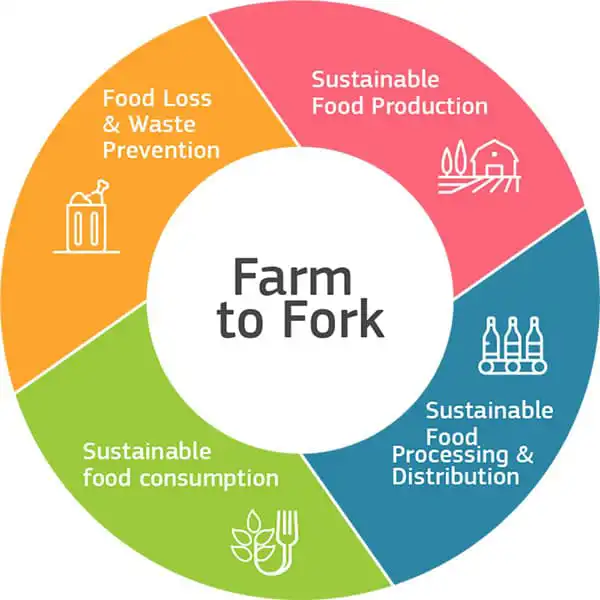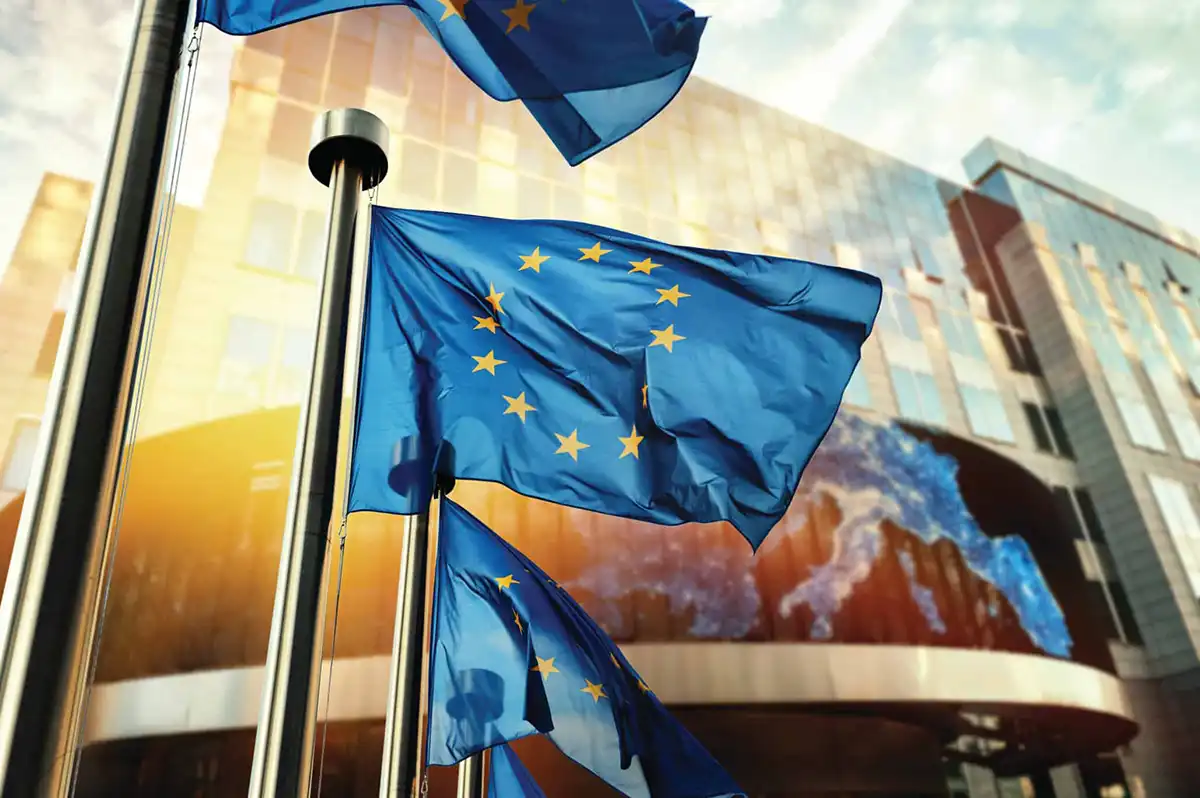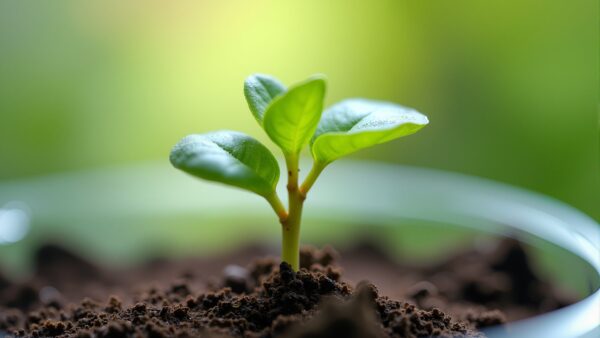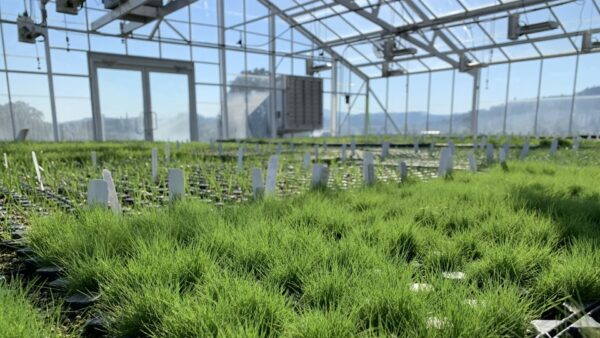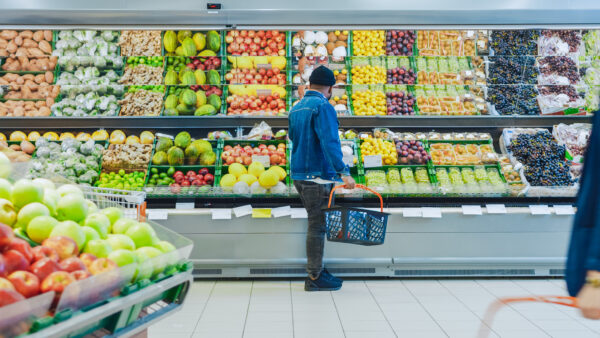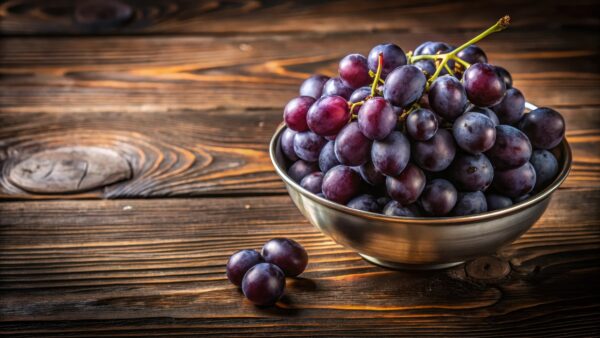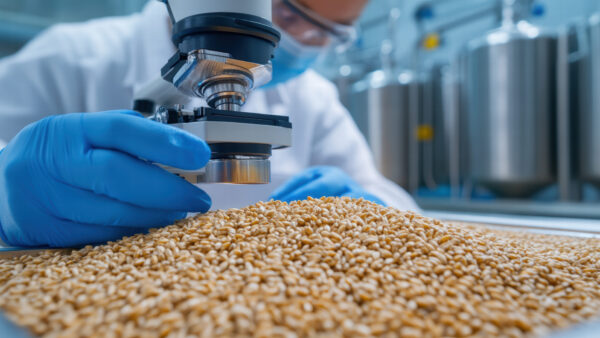The European Green Deal sets out how to make Europe the first climate-neutral continent by 2050, and has several policy areas such as Clean Energy, Biodiversity and the Farm to Fork strategy. The Green Deal itself seeks to address the challenges of sustainable food systems and recognises the inextricable links between healthy people, healthy societies and a healthy planet. The Farm to Fork strategy pursues the issue of food sustainability as well as the support allocated to the producers, i.e. farmers and fishermen. By 2030, the Farm to Fork Strategy foresees in a reduction in the use of chemical and more hazardous pesticides by 50%; reduce nutrient losses by at least 50 per cent, while ensuring no deterioration on soil fertility; reduce fertilizer use by at least 20 per cent, and has a goal of 25 per cent of total farmland being used for organic farming. As many of these goals seems rather ambitious, European Seed sat down with Norbert Lins, Chairman of the EU Committee on Agriculture and Rural Development (ComAGRI) to learn more about the Strategy, right from the inside of the EU Parliament.
European Seed (ES): Can you indicate in a nutshell what the Farm to Fork Strategy tries to achieve?
Norbert Lins: The Farm to Fork Strategy aims at creating a toolbox and long-term holistic vision for a sustainable food chain by including all actors across the chain, from production, procession, retail to the consumers. Ideally, the strategy should thus look at every angle and identify measures for more sustainability from the Farm to the Fork. The strategy can be a success if all actors have the feeling to be included and their input and work is valued. Let me give you an example: In my home State Baden-Württemberg in Germany, a citizen initiative threatened to divide farmers (including organic farmers) and the population in the question of how to best protect bees. While it was very likely that this fight would end up in nothing productive, both sides and both ministries (environment and agriculture) sat together and found a compromise which was on the one hand acceptable for the citizens and NGOs, but also, and more importantly, had the support of the farming community because it did not threaten their business. This example shows what the Farm to Fork Strategy needs: first, cooperation and acceptance and second, recognising that there is rarely a single correct solution to any problem. Whereas I like the idea of the strategy, unfortunately, what we can see now, it focuses too much on the “Farm” part, rather than the whole chain.
[tweetshareinline tweet=”The strategy can be a success if all actors have the feeling to be included and their input and work is valued.”” username=”bf0bb2e954fc86abade4306f627a7a29″
ES: And how is the link of the Strategy to the Green Deal?
Lins: Whereas the Green Deal defines an overarching goal for the EU to become greener, the Farm to Fork is the Green Deal for the agricultural and food sector. Other than in other sectors, in which the only goal is to reduce emissions, sustainability is more complex in my sector as it is also closely linked to biodiversity, animal welfare, retail and the consumer choice. It ranges from animal welfare, production standards (use of plant protection products and fertilizers), to feed and food additives, use of antimicrobials, transport, and processing.
ES: Climate change is high on many agendas. Will the Strategy help in mitigating some of the effects of climate change?
Lins: The strategy calls for a “food chain that works for consumers, producers, climate and the environment”, which clearly shows that one of the goals of the strategy is to minimise the impact of agriculture on climate. This goal needs to have a two-tiered approach: first, we need to reduce the emissions from the agricultural sector, and then we need to find good climate adaption strategies to guarantee our food security in Europe.
I welcome the proposal made by the Commission to foster carbon farming and sequestration, as we already see now that agriculture roughly stores what it emits. By introducing a private investment scheme for carbon farming, this would allow farmers a new income scheme which they can then re-invest in climate adaption measures, innovation, new technologies and more sustainable productions matters.
One aspect of ensuring our food production in Europe would also be to make them more regional, without undermining the internal market or international trade, but by being more cautious of where our food comes from. This would also automatically reduce GHG emissions from transport.
Another important aspect of mitigating our climate input is the question of methane. Rather than only looking at reducing meat production and consumption, I’d prefer a holistic approach that recognises that animals are a core part of European agriculture. We need to invest in new feed and intelligent barns for example.
As European Parliament, we will make sure that the Farm to Fork Strategy will set such incentives for more innovation and digitization.
ES: Not all farmers will be able to afford the required changes. How can they be stimulated to make the necessary changes?
Lins: As I said in the beginning, this strategy and the biodiversity strategy will only be a success if farmers’ voices are heard and included. In my experience, the success of strategies depends on their acceptance by those who have to implement them, thus we better focus on incentives rather than obligations.
And this, unfortunately, will not be easy, as on top the COVID-19 pandemic strikes at a sensitive moment, just when a reduced CAP budget collides with the greater environmental and climate ambition envisaged in the CAP post 2020 and the goals for the green transition set out in the Farm to Fork and Biodiversity Strategies, which all require additional financing. The new budget of the Common Agricultural Policy (CAP) should have taken that into account and should have provided more money for farmers. But I put a lot of hope in the new carbon farming. That’s why I have pushed to make the money from the Recovery funds available as soon as possible for the farmers.
ES: What role can there be for Europe’s seed sector?
Lins: Seeds are quite literally the essence of agricultural products – whether they become food for consumers, or feed for our livestock sector. Thus, the role of the European seed sector is crucial. The seed sector is one of the most innovative sectors in agriculture and if we want to achieve the new targets, we depend on the innovative ideas and new breeding techniques as without them it won’t be possible to reduce for example 50% of plant protection products while still having healthy plants. The agricultural sectors needs plants that are resistant to pests and adapted to climate change, which means that we need new plant varieties. For now, the Farm to Fork Strategy neglects this aspect and only sets on reduction rather than innovation. I put a lot of hope and support in the seed sector to promote this important aspect.
[tweetshareinline tweet=”“We depend on the innovative ideas of the seed sector and new breeding techniques as without them it won’t be possible to reduce for example 50% of plant protection products while still having healthy plants.”” username=”bf0bb2e954fc86abade4306f627a7a29″]
ES: Many say that new plant breeding techniques can greatly help in achieving some of the targets of the Green Deal. Do you foresee a role for those techniques?
Lins: As already indicated above, the answer is yes. I am one of those people who say that plant breeding techniques not only can but will greatly help in achieving the targets of the Green Deal. I therefore urge the Commission again to look at this solution more proactively and with vision. It will be hard to reduce pesticides and have food security at the same time without innovative and new breeds.
ES: With a 50% reduction in pesticides by 2030, how will we be able to achieve the same or higher yields?
Lins: A simple reduction of pesticides is not the solution and a reduction in yield production is unavoidable if we simply apply a reduction target without offering helpful solutions and research on that topic.
We need to provide farmers with the tools to fight plant diseases and predators. There are alternative measures like crop rotation, a different soil management or a further enhancing of integrated pest management, but this is not applicable to all kinds of crops and does not solely help in regaining possible losses due to pesticide reduction. New plant breeding techniques with varieties that are more resistant and of course digital farming with a more precise and targeted application of pesticides can also be a solution for a lesser use of pesticides. But they all need to go hand in hand if we want to maintain the current level of yield production if that is even possible.
[tweetshareinline tweet=”“A simple reduction of pesticides is not the solution…”” username=”bf0bb2e954fc86abade4306f627a7a29″]
ES: Food security is high on everybody’s agenda, especially since the start of the pandemic. Will the Strategy make Europe more resilient at a future outbreak?
Lins: Food security — which for me means enough, high quality, nutritious and affordable food — remains high on the agenda of the agricultural policy making. To start on a positive note, I believe that with hindsight, EU agriculture has suffered relatively less damage compared to other parts of the economy which have been affected by lockdown measures. The COVID-19 outbreak and related measures taken by Member States created a demand shock rather than a supply one and recent market developments show that our production potential has been preserved, as reflected in the good production prospects for various sectors such as dairy, sugar, pig meat, olive oil, wine and tomato or in the exports perspectives, which remain good overall.
However, the crisis has shown to the public that full shelves are not a normality but require hard work and a functioning internal market and acknowledgement. Our food sector has shown resilience but is not without weaknesses. In my opinion, the Farm to Fork strategy has some good ideas, but in itself is not the solution to as it currently stands.
[tweetshareinline tweet=”“The COVID-19 crisis has shown to the public that full shelves are not a normality but require hard work and a functioning internal market and acknowledgement.”” username=”bf0bb2e954fc86abade4306f627a7a29″]
Next to the question of quantity, we should also talk about the quality of the products we want to have. Not only will the yields decrease, there is also the question of health concerns without enough fungicides for example. Therefore, before any targets are legally or binding or the Commission sends out letter to Member States urging them to implement the Farm to Fork Strategy, a proper impact assessment on food security, quality and income stability must be conducted.
ES: Another target is to stimulate organic farming in the EU. But with much lower yields, this does not seem sustainable. What is your take on this?
Lins: Farm to Fork and the Biodiversity Strategy propose 25 per cent of land is to be reserved for organic farming. I believe this is very ambitious. In 2018, this figure was 7.7 per cent in the EU as a whole and 9.1 per cent in Germany. Stipulating 30 per cent would correspond to roughly a three-fold increase in Germany. This will be tough to achieve, and I would like to illustrate this by looking at the figures for Baden-Württemberg. Organic farming currently has a share of 14 per cent and we have achieved this over 40 years. How are we supposed to achieve 25 per cent within 10 years? The same applies to the use of fertilisers and pesticides. We won’t get farmers on board if we force them to make unrealistic reductions.
ES: In the end a major role is for consumers who need to change their diet. Will they also be targeted by the Strategy?
Lins: According to the title of the strategy, the Fork plays a role. For now, it rather seems that the responsibility lays on the shoulders of the Farm and the food chain. I want to make clear that we will only see a change if it will be market-oriented and the consumer is aware about his/her responsibility and that he/she can chose the kind of agriculture in the supermarket. We will have to do a better job labelling our products so that consumers know whether they originate from the EU and where and when they have been produced. The question here of course is how “local” we want to go and how to avoid threatening the internal market by promoting national products over products originating from other EU countries.
To conclude and to close the circle to what I said in the beginning: The Strategy will only work if ALL actors in the chain work together and share the responsibility to make our food sector more sustainable and resilient.


